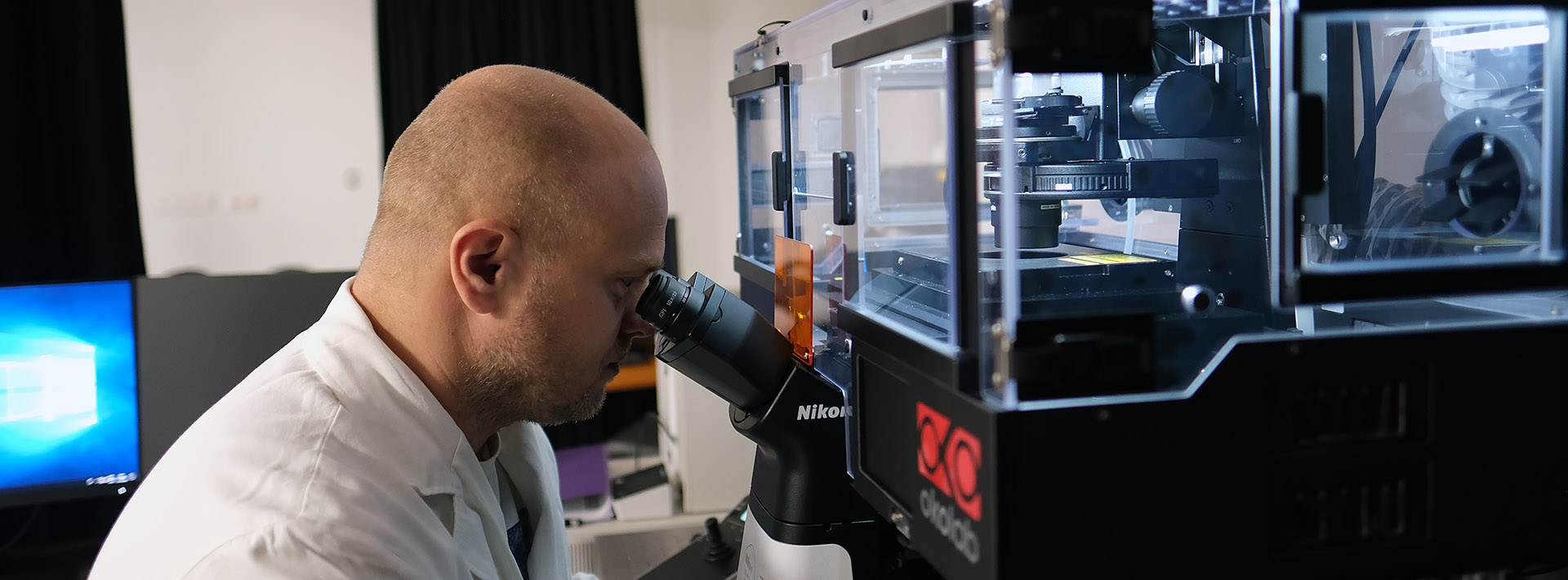Daten
Offizielle Daten in der Fachveröffentlichung für das folgende akademische Jahr: 2024-2025
Lehrbeauftragte/r
-
Buzás Péter
associate professor,
Institute of Physiology -
Semesterwochenstunden
Vorlesungen: 12
Praktika: 0
Seminare: 0
Insgesamt: 12
Fachangaben
- Kode des Kurses: OXF-LLV-h-T
- 1 kredit
- General Medicine
- Optional modul
- spring
ODA-EL2-T finished
Zahl der Kursteilnehmer für den Kurs:
min. 5 – max. 40
Erreichbar als Campus-Kurs für . Campus-karok: ÁOK BTK ETK GYTK TTK
Thematik
For most people, vision is the primary source of perception. Quite often, we wonder how it actually works and the answers don't always seem easy. Why is the sky blue? How many megapixels does the human eye have? Can we really see a single photon? What is blindsight? How does the bull see the red cape? How does 3D movie work? This course is aimed at answering many questions of this kind but also at raising some that puzzle researchers today. We will present live demonstrations, illusions and discuss experiments that led to important discoveries in order explain the neural mechanisms of vision in an interesting way. We will also talk about diseases causing loss of visual functions as well as about animal vision. The course begins with an introduction to psychophysical and neurophysiological research methods and a little light physics. Then we follow the path of visual information processing from the photoreceptors to higher visual cortical areas. In the second part, we talk about some of the visual sub-systems including color vision, stereopsis, motion perception and finally visual memory and attention. To conclude the course, we discuss visual illusions that won the latest Best Illusion of the Year Contest.
Vorlesungen
- 1. Sensation and perception. Psychophysical methods. The methods of neuroscience in vision research - Buzás Péter
- 2. A little light physics. Radiometry and photometry. Optical system of the eye. Rods and cones. Phototransduction. Dark and light adaptation - Buzás Péter
- 3. One picture, ten interpretations: retinal processing. The subcortical channels - Buzásné Telkes Ildikó
- 4. Receptive fields in primary visual cortex. Columns, hypercolumns and maps. Building blocks of pattern and form perception - Buzásné Telkes Ildikó
- 5. "What?" and "where?" Parallel processing in the visual cortex. Visual perception and cognition. Gestalts and grandmother cells - Buzás Péter
- 6. The color stimulus. Brain mechanisms of color vision. Color appearance. The names of colors. Subjective colors. Synesthesia: wednesday is indigo blue. Disorders of color vision - Buzás Péter
- 7. Animal vision. The case of the bull with the red cape - Kóbor Péter
- 8. Depth perception with one eye. Depth perception with two eyes. How does 3D movie work? - Kóbor Péter
- 9.
What does the eye doctor look at? Clinical vision tests
- Cziger-Nemes Vanda Ágnes - 10.
Visual development and its disorders
- Cziger-Nemes Vanda Ágnes - 11. Sensing and perceiving visual motion. Optic flow. Navigation. Biological motion - Cziger-Nemes Vanda Ágnes
- 12. Visual learning and memory. Visual attention and its disorders - Cziger-Nemes Vanda Ágnes
Praktika
Seminare
Materialien zum Aneignen des Lehrstoffes
Obligatorische Literatur
Vom Institut veröffentlichter Lehrstoff
Lecture slides will be available on MeetStreet.
Skript
Empfohlene Literatur
Robert Sekuler - Randolph Blake: Perception, McGraw Hill
Jeremy Wolfe et al.: Sensation and Perception, Sinauer
Eric Kandel et al. (ed.): Principles of Neural Science, McGraw Hill
Voraussetzung zum Absolvieren des Semesters
Written essay that describes a visual illusion and analyzes it according to pre-defined criteria.
Semesteranforderungen
Written essay of 1400-1800 words at the end of semester.
Möglichkeiten zur Nachholung der Fehlzeiten
Absences up to 25% of the sessions can be made up by passing the end-semester test.
Prüfungsfragen
The essay must describe a visual illusion and analyze it according to pre-defined criteria.
Prüfer
- Buzás Péter
- Buzásné Telkes Ildikó
- Cziger-Nemes Vanda Ágnes
- Kóbor Péter
